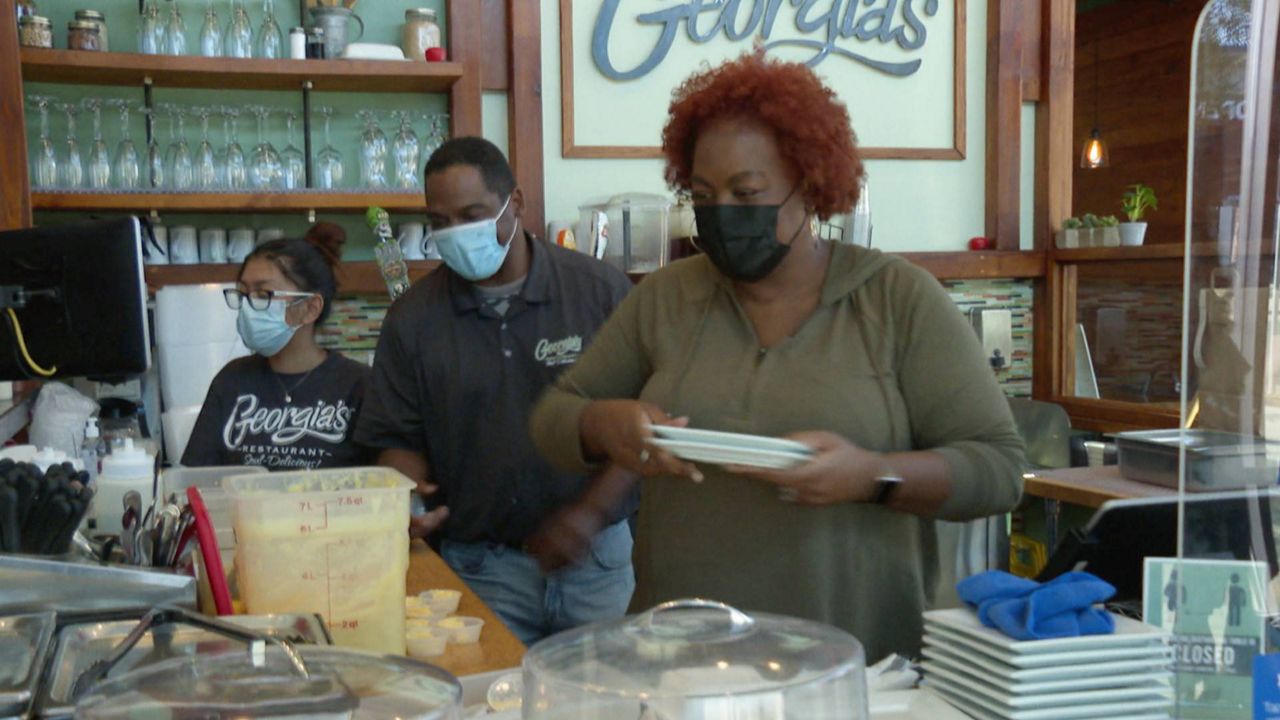LOS ANGELES (CNS) — The county Board of Supervisors Tuesday gave final approval Tuesday to an ordinance requiring that all food-service containers, cups, dishes and cutlery distributed by restaurants and food facilities in unincorporated areas of Los Angeles County be recyclable or compostable.
What You Need To Know
- The ordinance will be phased in starting in May 2023
- It will also prohibit retail stores from selling Styrofoam products, unless they're encased in a "durable material"
- The ordinance was backed by various environmental groups
- It was also met with opposition from business groups
The ordinance, which will be phased in starting in May 2023, will also prohibit retail stores from selling "expanded polystyrene," or Styrofoam, products such as coolers, packing materials, cups, plates and pool toys, unless they are encased in a "durable material."
It also requires that full-service restaurants with sit-down service provide customers with reusable "multi-service" utensils and plates.
The board, which tentatively approved the measure two weeks ago, voted 4-1 Tuesday without comment to give it final approval. Supervisor Kathryn Barger was the dissenting vote.
The ordinance will take effect May 1, 2023, for all food facilities operating in a permanent location, and for all retail stores. It will take effect for food trucks on Nov. 1, 2023, and on May 1, 2024 for farmers' markets, catering companies and temporary food facilities.
Violators will be fined up to $100 per day, to a maximum of $1,000 per year.
The ordinance was backed by various environmental groups, who cited the impact of plastics on waste streams locally and globally, and on people's health in general.
CJ O'Brien with the environmental group Oceana told the board earlier this month that billions of pounds of plastic waste enter the marine environment each year, and the amount is projected to triple by 2040.
She said marine animals "are consuming or becoming entangled" in the plastics, and noted that plastic is also becoming a health issue for the human population.
"Plastic has now been found in our water, food, air and our bodies, and scientists are still (learning) how this may be affecting human health," she said.
But the ordinance was met with opposition from business groups. A representative of the Valley Industry and Commerce Association told the board there was no evidence the ordinance will actually reduce waste, but it will definitively increase costs. According to VICA, the cost of purchasing 100 compostable forks would pay for 1,000 plastic ones.
Acknowledging that the ordinance will require extensive changes in business operations, the board earlier this month approved a motion by Supervisors Janice Hahn and Hilda Solis calling for the county to begin a year-long outreach and education campaign leading up to the implementation of the law. Under that campaign, county officials will educate business owners about the requirements and also compile a list of businesses that supply compostable/recyclable materials, while also monitoring supply chain issues that could impact the availability of the materials.
Hahn said she introduced the motion "to make sure that we work with our businesses. We want to make sure they're not overburdened and have what they need to comply with this."
"We want to help them, give them the tools that they need," she said.
Hahn acknowledged that the past two years of COVID-19 restrictions have been hard on restaurants, and many were forced to close, but she said the new ordinance is "important" and "necessary" to keep plastic products out of the waste stream.
Barger said she opposed the ordinance primarily because it did not offer an exemption to hospital cafeterias and snack bars — noting that food trucks were given an extra six months to adhere to the law. She also said she was concerned about whether the supply of compostable/recyclable materials would be able to keep up with demand created by the ordinance, and whether there will be sufficient composting companies willing to handle the increased volume of food-service materials.



